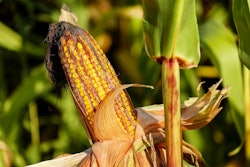
China’s Soy Crush Slips
JCI reported China’s weekly crush declined 6% from the previous week to just under 2.1 million tonnes.
Meal stocks in Chinese ports increased from 878,000 tonnes to 920,000.
Port operations are starting to return to normal after the recent COVID outbreak, and end users are working through their increased inventory.
Total crush for 2020/21 is near 81.7 million tonnes, 2.9 million higher than last year, and in line with USDA’s recent changes.
July soymeal exports were light at 83,000 tonnes, down from 110,000 in June and lower than the 211,000 shipped last July.
For China to reach USDA’s meal export forecast of 1.25 million tonnes, August and September exports need to average 177,000 tonnes per month.
FBN’sTake OnWhat It Means:压榨利润保持积极的,最近的圣rength in domestic meal demand has started to weaken and port meal stocks are climbing again. China’s meal exports will need to average at the high of the marketing year over the next couple of months, or crush may need to be adjusted down further. This does not support ideas for increased demand in the near term.

Trade Expectations for Statistics Canada Crop Production Report
The market anxiously awaits the Stats Can crop report, scheduled to be issued Monday; trade expectations are from a Reuters poll.
The trade sees spring wheat production at 15.9 million tonnes versus 25.8 million tonnes harvested last year.
Durum production is seen coming in at 4.1 million tonnes, down sharply from 6.6 million cut in 2020.
Barley production on average is seen at 7.4 million tonnes versus last year’s monster crop at 10.7 million.
Oat harvest is seen at 3 million tonnes, down from 4.6 million in 2020.
Canola production is expected to average a slim 14.1 million tonnes versus last year’s crop at 18.7 million, which could be revised.
Lentil production forecasts average at 2.1 million tonnes versus 2.9 million last year while pea production is seen at 2.9 million, down sharply from last year’s crop of 4.6 million tonnes.
FBN’sTake OnWhat It Means:Harvest totals are seen lower versus last year, which is not a surprise. In the US, most attention is likely to be paid to the spring wheat crop being exceptionally short, followed by the canola data and potential for tighter veg oil stocks. Yield reports have been all over the place but generally, below average yields are expected for all crops. This keeps upside risk in markets.
FBN Market Advisoryservices are offered by FBN BR LLC, dba FBN Brokerage, FBN BR and FBN Market Advisory (NFA ID: 0508695)
The risk of trading futures and options can be substantial and may not be suitable for all investors. Past performance is not necessarily indicative of future results.
This is not an offer or solicitation in any jurisdiction where we are not authorized to do business or where such offer or solicitation would be contrary to the local laws and regulations of that jurisdiction, including, but not limited to, persons residing in Australia and Canada.



















